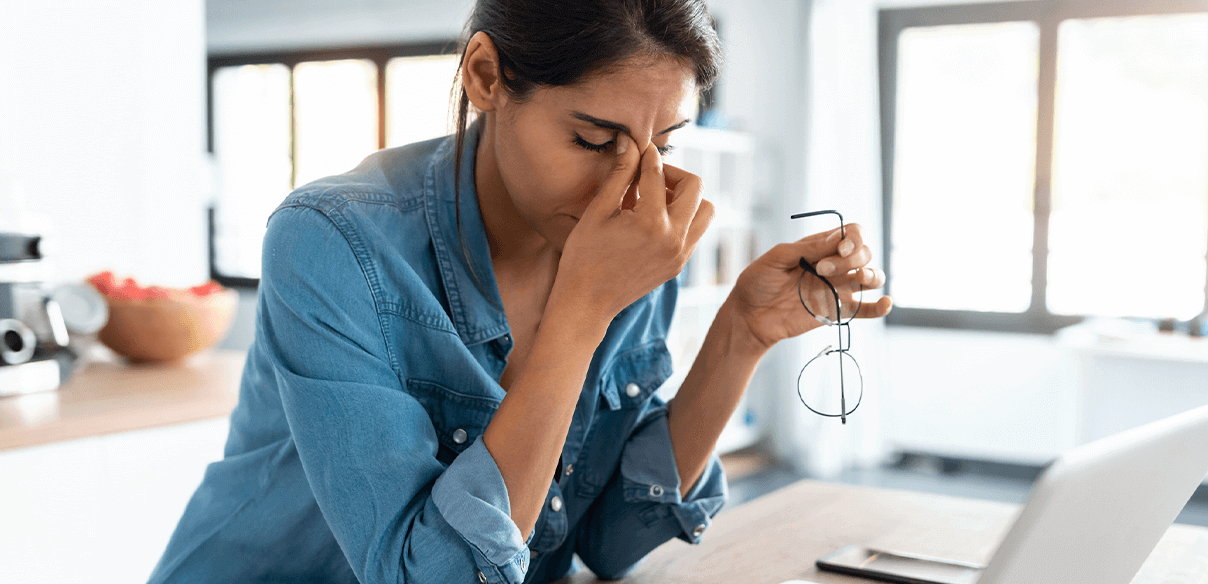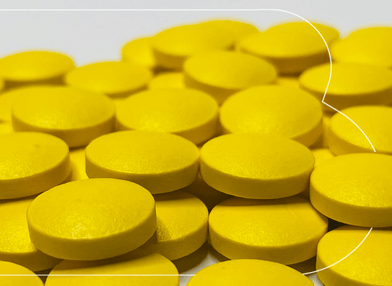How are Hair Loss and Stress related?
Occasional anxiety and stress are a normal part of our life. Unlike anxiety[i], which can be described as a state of mind associated with facing various situations and life in general, stress[ii] is the physical or mental response to an external cause.
In fact, sometimes common everyday difficulties, such as job or family problems, health or money issues, may cause stress. These occasional stressors may occur once or for a short period of time or be repetitive in our life. Unfortunately, hair loss itself can cause stress and sometimes trigger a vicious circle.
Several levels of interactions can be distinguished between psycho-emotional stress and hair loss:
• acute or chronic stress as a primary inducer of telogen effluvium,
• acute or chronic stress as an aggravating factor in a hair loss disorder resulting from an endocrine, toxic, metabolic, or immunological cause as primary pathogenesis (e.g., androgenic alopecia, alopecia areata),
• stress as a secondary problem, in response to prior hair loss, which might also contribute to the perpetuation or aggravation of hair loss itself and induce a self-perpetuating vicious circle.

Psychological stress has indeed a tangible impact on hair loss, as it causes an increase in the level of androgenic hormones, which results in the release of various hormones into the blood (androgens).[iii] Androgens are the main regulator of human hair follicles and transform small vellus follicles, which produce tiny, virtually invisible hair, into larger intermediate and terminal follicles generating bigger pigmented hairs. Androgens may also inhibit scalp hair growth causing androgenetic alopecia. Androgens act within the follicle to alter the mesenchyme–epithelial cell interactions, changing the period of time in which hair is growing, the size of the dermal papilla, and the activity of dermal papilla cells, keratinocytes, and melanocytes.[iv]
The hair growth cycle
The hair growth cycle includes three distinctive phases: anagen, catagen, and telogen.
Anagen is the growth phase, which lasts 3-7 years depending on gender and the individual characteristics. During the anagen phase, hair grows regularly by approximately 1 cm per month. At this stage, the hair root expands and fills the hair follicle and new keratinocytes are produced in the matrix. They push the oldest ones out lengthening the hair. About 85% of all hairs are growing at any one time.[v]
Catagen is the transition phase. It lasts 3-4 weeks, during which the bulb keratinocytes degenerate. Hair stops growing and detaches from the base of the follicle. The hair bulb begins to break down, thus shortening the follicle. On average, 1% of follicles are in the catagen stage.
Telogen is the resting phase, which lasts 3-4 months. During this phase, hair does not grow but remains attached to the follicle and sheds naturally, as a consequence of rubbing and brushing. Approximately 10–15% of all hair is in this phase at any one time. At the end of the telogen phase, the hair follicle restarts the Anagen phase, triggering a new cycle starts, and new hair begins to form.
The number of hair life cycles is limited. It is estimated that humans have about 25 cycles throughout their life.

Some recent scientific studies showed that emotional stress modifies the hair cycle, by shortening the anagen phase (growth) and triggering prematurely the catagen phase (loss). Emotional stress also causes the release of cytokines which cause a perifollicular inflammatory reaction.[vi] This is the reason why hair starts to fall 4-6 months after a stressful event.
It is important to address hair loss at an early stage, in order to treat it effectively. Laboratoires Bailleul, a leader in the field of hair loss treatments, has developed a complete range of products, dermatological treatments and food supplements enhanced by innovative active ingredients for hair health.
[i] National Institute of Mental Health, Anxiety Disorders, available at: https://www.nim h.nih.gov/health/topics/anxiety-disorders
[ii] National Institute of Mental Health, I’m So Stressed Out! Fact Sheet, available at: - https://www.nimh.nih.gov/health/publications/so-stressed-out-fact-sheet
[iii] Hadshiew I.M. et al., Burden of Hair Loss: Stress and the Underestimated Psychosocial Impact of Telogen Effluvium and Androgenetic Alopecia, Journal of Investigative Dermatology, 2004;123:455-457. Available at: https://www.sciencedirect.com/science/article/pii/S0022202X15309635#bb0030 Last access: June 8th, 2022.
[iv] Randall VA. Androgens and hair growth. Dermatol Ther. 2008 Sep-Oct;21(5):314-28.doi: 10.1111/j.1529-8019.2008.00214.x. PMID: 18844710.
[v] Nikfar S., et al., Hair. In: Encyclopedia of Toxicology, 2014.
[vi] Cheveu, vieillissement et environnement : aspects fondamentaux. D’après la communication du Pr U. Blume-Peytavi. Ann Dermatol Venereol, 2009;136:S20-2.





